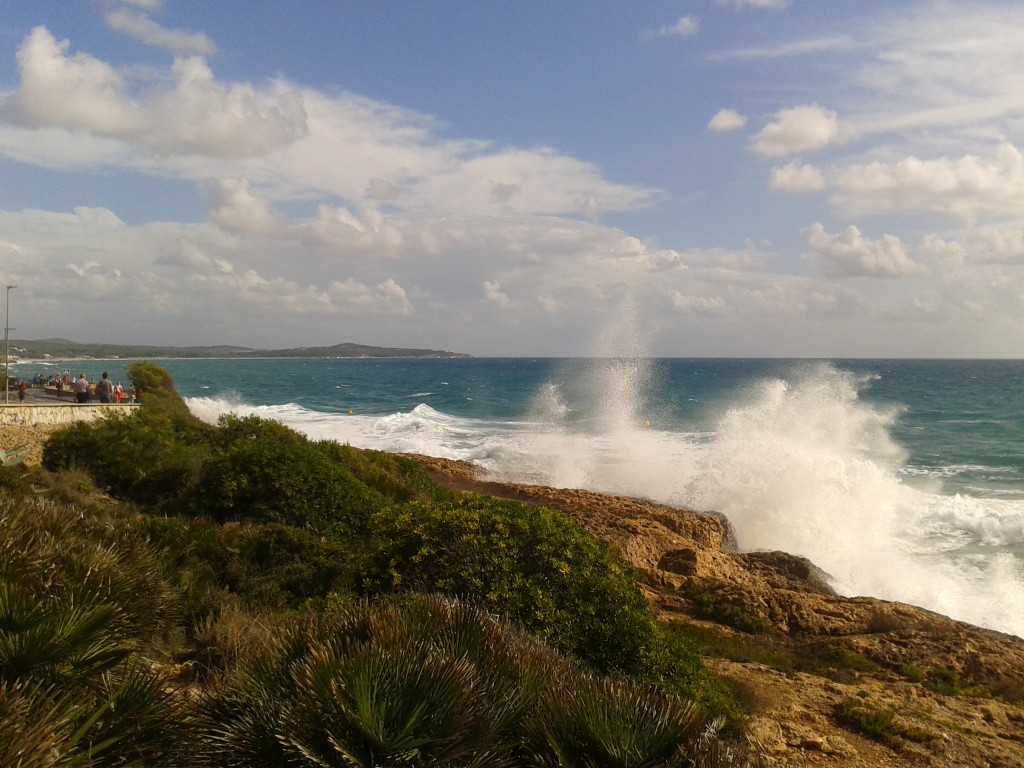Foreigners who arrive to Tarragona for the first time, and suddenly discover the sea, at the top of the ‘Rambla’, don’t ever let it go: they walk up the ‘Sant Antoni’ walkway, up to the ‘Camí de la Cuixa’, or down the ‘Baixada de Toro’, and into the seaport and ‘Serrallo’… One can get the best possible view of the sea while standing at the ‘Balcó del Mediterrani’, I reckon. Resting on the baranda, our sight is taken very far, over the old quarry, the railroad tracks and the promenade, way over the shore and the waves birth, thanks to the wide non-urban space between the beach and us. The Roman Amphitheatre and the tracks have preserved the beachfront land from private uses, allowing us to keep our shared optimistic perspectives.
This is why it is so important for coastline protective laws to care about the will of the population’s wide majority (those who live far from the sea), rather than the legal expectations a few private users from the seafront might prefer. In my opinion, it is a shame that the Law 2/2013, May 29, the ‘Law of littoral protection and sustainable use’, has betrayed its name, and decreased the width of the area under protection, since such measure will not allow new urban agglomerations built on other peninsular coastline areas matching the symbiosis achieved in Tarragona, the city and nature.
There is no doubt that even here there are loads of things to be improved, because ‘Miracle’ and ‘Arrabassada’ beaches, both crowded and neat, are disrupted by some other lonely and forgotten cliffs. Indeed, it is not very common for cleanness supporters to venture going to the ‘Cova del Gos’, despite the spot’s beauty. Neither do tourists, of course. For too many years, accessing the cliffs at the ‘Punta del Miracle’ has been let down by some trash bins installed by some illegally built restaurants, unpacked litter of unknown origin, or unhealthy runoffs thrown from some properties by the round path.
Some cities have managed taming those non-accessible areas near the sea by ordering sculptures to well-known artists and then placing them on a very specific spot, right on top of the rocks. I am not only thinking here about Donosti, with the installation of the ‘Peine del Viento’ by Eduardo Chillida, at the Cantabrian, but also about some nearby villages which have exposed beautiful sculptures to the Mediterranean breezes. With such interventions, councils are putting art at people’s disposal, while improving the monument’s access following an environmentally friendly process, and creating a flow of strollers along the coastline, both tourists and locals, which helps enlarging the city and merging it with nature.
Tarragona: bona terra,
Tarragona: bona gent.
I un mar blau I resplendent
a la dreta i a l’esquerra
Tarragona: good land,
Tarragona: good people.
And a blue and shiny sea
to the right and to the left.
Text and photos: Isabel Baixeras
Translate: Artur Santos (@artur_1983)




